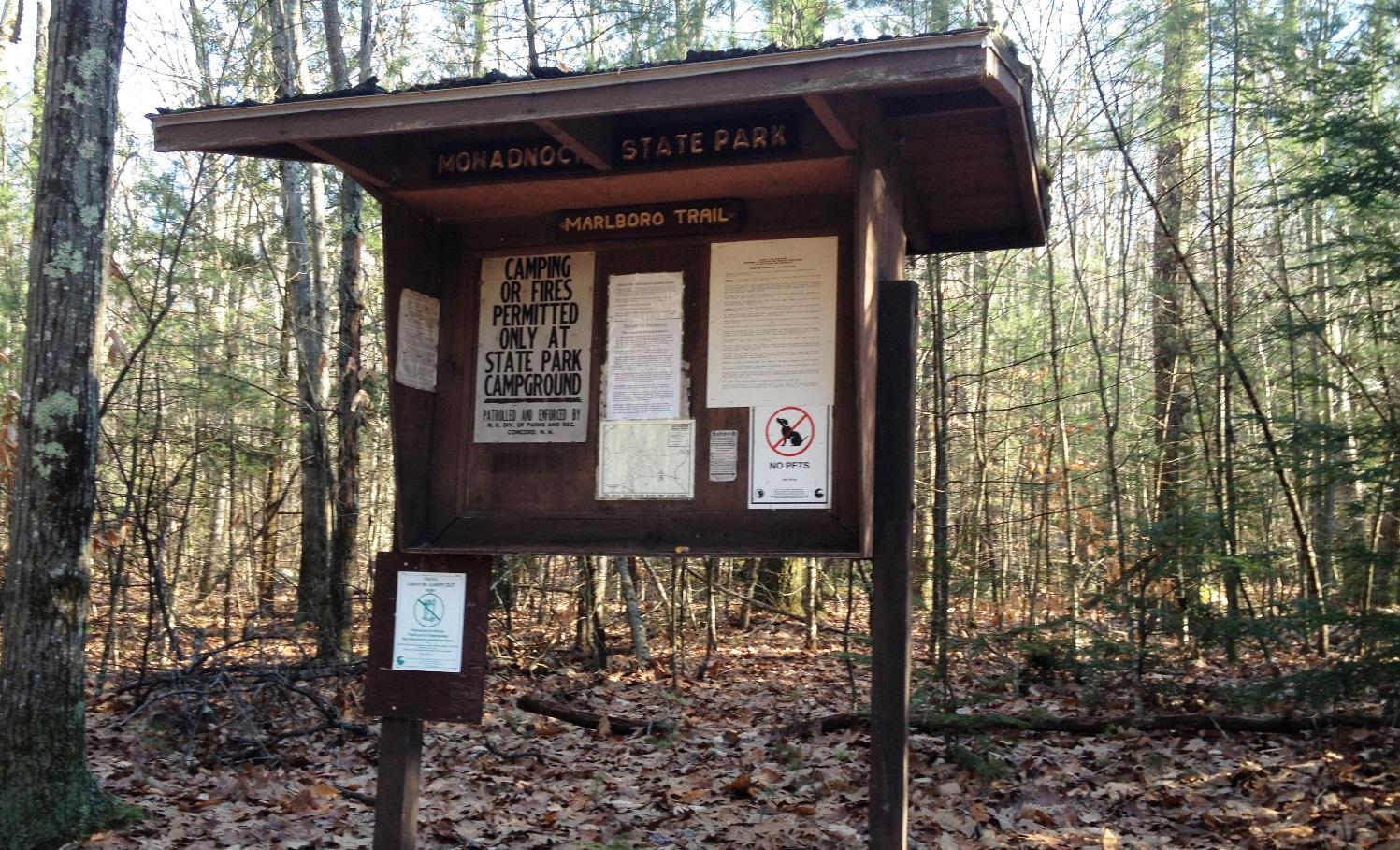Marlboro Trail and Parking Area in Jaffrey to Remain Open
- Tags:
- Timber Harvesting,
- Working Forests

CONCORD – Nov. 28, 2016 – The Society for the Protection of New Hampshire Forests (Forest Society) has begun a timber harvest on 65 acres of land the nonprofit organization owns on the western side of the lower slopes of Mt. Monadnock near Shaker Farm Road in Jaffrey. The harvest is the first of several that will be completed in stages over the next several years, affecting a total of about 250 acres.
The nearby Marlboro Trail and parking area will remain open to hikers during the harvest, though hikers on the Marlboro Trail should exercise caution where machinery will cross the trail. A previously used log landing off Shaker Farm Road in Jaffrey will be used to store logs until they are trucked to mills.
“At the end of the harvest, hikers accessing the Marlboro Trail parking area will find the class-six road leading there to be left in an improved state ,” said Forest Society forester Gabe Roxby.
The Forest Society owns 4,500 acres on Mt. Monadnock and leases much of that to the State to manage as Monadnock State Park. Periodic timber harvests are part of the long-term management plan that calls for cutting timber to encourage young forest regeneration and create diverse wildlife habitats while generating revenue for the organization to use to conserve forests, farms and wetlands in New Hampshire.
No harvesting will be done on the higher elevation areas of the mountain, where 2,800 acres containing unusual natural communities are set aside as an “ecological reserve.”
“The lower flanks of Mt. Monadnock contain common forest types in New Hampshire, and these are the areas the Forest Society manages for timber,” Roxby said. “A major goal of our management of these areas is to create patches of young forest to complement the aging forests of the ecological reserve.”
Of the 55,000 acres owned and managed by the Forest Society statewide, approximately one-third is land inaccessible for logging or designated as ecological reserve, while the rest is managed for timber, recreation and wildlife habitat.
“Demonstrating sustainable harvesting is part of our mission,” said Jane Difley, president/forester at the Forest Society. “Conducting a harvest like this one does mean that people will notice changes in the forest.”
The Forest Society will offer a public tour of the harvest site in early January, with a date to be determined according to weather and site conditions. The tour date will be posted when available at the Forest Society’s website, www.forestsociety.org/events.
To learn more about the forestry goals of this harvest, see Roxby’s blog post.
Founded in 1901, the Society for the Protection of New Hampshire Forests is the state’s oldest and largest nonprofit land conservation organization. Supported by 10,000 families and businesses, the Forest Society’s mission is to perpetuate the state’s forests by promoting land conservation and sustainable forestry. The organization owns 54,500 conserved acres of land in New Hampshire and holds conservation easements on another 130,000 acres.
